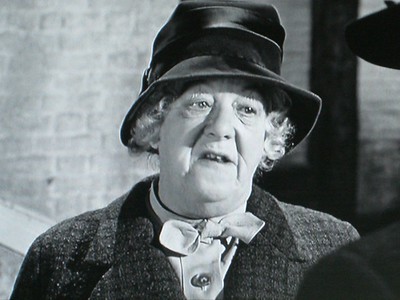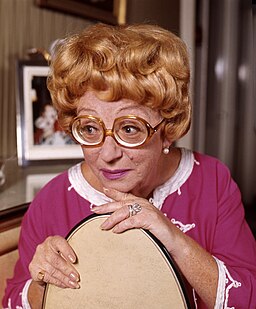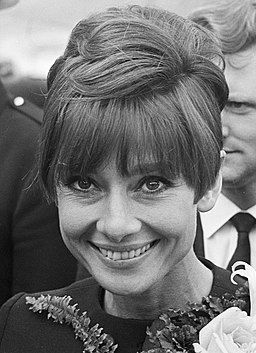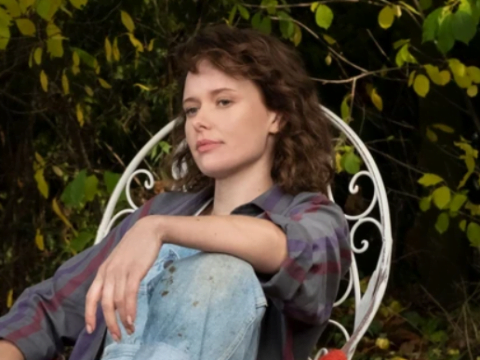Early Life
The actress Celia (Elizabeth) Johnson was born on 18 December 2008 at 46 Richmond Hill, Richmond, Surrey. Nicknamed “Betty”, she was the second of the three children of John and Ethel Johnson. John Johnson was a doctor and the physician of the Duke (the future George VI) and Duchess of York. Between 1919 and 1926, Johnson attended St Paul’s Girls’ School in London. She left school with little acting experience but was nonetheless accepted into the Royal Academy of Dramatic Art (RADA).
In 1928, she made her professional stage début in George Bernard Shaw’s Major Barbara at the Theatre Royal, Huddersfield. The following year she starred on the West London stage in a Hundred Years Old. In 1930, Johnson appeared on the New York stage, appearing as Ophelia in Hamlet. Throughout the rest of the 1930s, she established herself as a theatrical actress.
The War Years
Johnson’s life and career were greatly disrupted by the advent of World War II. In 1940, she was starring as Mrs Winter in a London theatrical production of Daphne du Maurier’s Rebecca. However, the play’s run was cut short when the theatre was damaged by a Luftwaffe bombing raid during an actual performance. It was soon after that both Johnson’s widowed sister and sister-in-law moved into her home bringing their children. With a son of her own, she now had the overall responsibility of seven children. Thus, she did not have the time necessary to devote to the theatre.
Consequently, to earn an income, Johnson switched from stage work to the lesser demands of film and radio. She made her screen debut in the documentary film A Letter From Home (1941). The short film, directed by Carol Reed (of later Third Man fame), was nominated for an Oscar. The following year, she made her feature film debut in In Which We Serve (1942). The film was also the big-screen introduction of Richard Attenborough and Juliet Mills. Johnston next starred in the British comedy Dear Octopus (1943) and followed it up with top billing in the comedy-drama This Happy Breed (1944).
Brief Encounter and After
Johnson was next cast as the female lead role in David Lean’s Brief Encounter (1945), alongside Trevor Howard. Initially, she was unsure whether to take the part because of her family commitments. However, highly impressed with the film script, she decided to accept the offer. Often cited as one of the best British films of all time, Johnston received an Oscar nomination for her performance.
After Brief Encounter, Johnston did not make another film for five years. This was mostly due to family commitments as she gave birth to baby daughters in both ’46 and ’47. She resurrected her film career after a five-year absence, starring in the British drama The Astonished Heart (1950). Prioritising family first, Johnson picked her roles sparingly for the rest of her career. In 1970, she picked up the BAFTA for Best Actress in a Supporting Role in the Prime of Miss Jean Brodie (1969). This had followed a 12-year hiatus from the film industry. It turned out to be her last big screen role.
Late Career
Johnson’s next screen performance was on television, though it did not happen for another four years. She won a second BAFTA for the role of Mrs Palfrey in Mrs Palfrey at the Claremont (1973). It was an episode of the BBC’s Play for Today. Between 1976 and 1980, she appeared in four TV films. The last of these was the BBC’s Staying On, in which she reunited and co-starred with Trevor Howard.
Celia Johnson’s very last screen appearance came in 1981 in the TV series Celebrity Playhouse in the episode named The Potting Shed. In all, Celia Johnson appeared in some 24 movies, including short documentaries and television films.
Personal Life
In 1935, Celia Johnson married the adventurer, journalist, soldier, and travel writer Peter Fleming. Peter was the older brother of the famed author and James Bond creator, Ian Fleming. The couple remained married until Fleming’s death from a heart attack in August 1971. Their marriage produced three children; Nicholas (1939), Kate (1946), and Lucy (1947).
Celia was far removed from the glamorous movie star she may have alluded to in the likes of Brief Encounter. She was renowned for being very down-to-earth. Off-screen, her poor eyesight meant she had to wear thick-lensed glasses. She also had two false front teeth, having managed to knock out her own during teenage high jinks. By all accounts, she had a great sense of humour and was great fun to work with.
Dame Celia resolutely refused to write her autobiography. ”I don’t keep a scrapbook and I have no souvenirs from my career,”. However, her daughter Kate Fleming did write a biography of her mother, simply entitled “Celia Johnson”, which was published in 1991.
In 1958, Johnson was made a Commander of the Order of the British Empire (CBE) for her services to the theatre. Her award status was raised in 1981 when she was presented with a Damehood (DBE).
Death
On 26 April 1982, Celia Johnson was at her home in Nettlebed, Oxfordshire playing cards with friends. She suddenly collapsed from a stroke and died just a few hours later. She had only just embarked on a theatre run of Angela Huth’s new play The Understanding (1982), with Ralph Richardson.
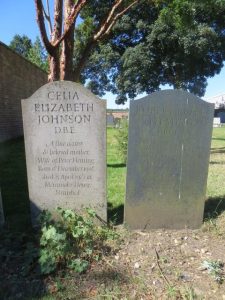
Photo Credit: CC 2.0 BY-SA DEED
Celia Johnson was buried next to her husband at St. Bartholomew’s churchyard in the village of Nettlebed. In 2008, English Heritage erected a Blue Plaque at her childhood home of 46 Richmond Hill, Richmond0on-Thames.

